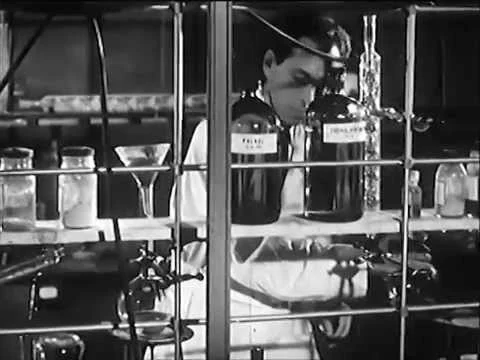Supply-Chain Issues 2021 - Natural Rubber ⇝
In the 1840s, sulphur was used to vulcanise rubber, stabilising it and making tyre production possible.
A closely-related material, gutta-percha, is a natural latex. This early thermoplastic was used from the mid-1800s, enabling telegraph wires to be laid at the bottom of the sea and electrical wires to be insulated. Other natural polymers resembling modern plastic were developed from cellulose, a natural polymer found in wood. The first, parkesine, was developed to produce celluloid in 1870, a medium for cinema film.
How Nylon Was Discovered - Ri > .
In the 1840s, sulphur was used to vulcanise rubber, stabilising it and making tyre production possible.
A closely-related material, gutta-percha, is a natural latex. This early thermoplastic was used from the mid-1800s, enabling telegraph wires to be laid at the bottom of the sea and electrical wires to be insulated. Other natural polymers resembling modern plastic were developed from cellulose, a natural polymer found in wood. The first, parkesine, was developed to produce celluloid in 1870, a medium for cinema film.
How Nylon Was Discovered - Ri > .
Plastics in WW2 - TedEd > .
But it was during the 20th century that plastics really took off. In 1907, Leo Baekeland invented the first synthetic plastic, bakelite, from fossil fuel-based chemicals. These revolutionary plastics were easy to mould and could be quickly mass produced. These materials were popular, cheap and built to last. The pace of development increased and by 1935 other polymers, such as polystyrene, polyester, PVC, polythene and nylon were all being manufactured from fossil fuels."
https://theconversation.com/plastic-is-now-part-of-our-planets-fabric-a-scientist-and-archaeologist-discuss-what-happens-next-106019 .
https://www.youtube.com/watch?v=GirvOmjPZrc
Plastics: "Origin and Synthesis of Plastics Materials" 1945 US Office of Education
https://www.youtube.com/watch?v=8_gDAjkfrz4
A brief history of plastics
https://www.youtube.com/watch?v=QW3OGMZ1bWc
How A Crazy Laboratory Accident Helped Create Plastic
https://www.youtube.com/watch?v=ML0PN_zvML8
But it was during the 20th century that plastics really took off. In 1907, Leo Baekeland invented the first synthetic plastic, bakelite, from fossil fuel-based chemicals. These revolutionary plastics were easy to mould and could be quickly mass produced. These materials were popular, cheap and built to last. The pace of development increased and by 1935 other polymers, such as polystyrene, polyester, PVC, polythene and nylon were all being manufactured from fossil fuels."
https://theconversation.com/plastic-is-now-part-of-our-planets-fabric-a-scientist-and-archaeologist-discuss-what-happens-next-106019 .
https://www.youtube.com/watch?v=GirvOmjPZrc
Plastics: "Origin and Synthesis of Plastics Materials" 1945 US Office of Education
https://www.youtube.com/watch?v=8_gDAjkfrz4
A brief history of plastics
https://www.youtube.com/watch?v=QW3OGMZ1bWc
How A Crazy Laboratory Accident Helped Create Plastic
https://www.youtube.com/watch?v=ML0PN_zvML8



